 by our College Data Analytics Team
by our College Data Analytics TeamMBTS total enrollment is approximately 3,432 students. 401 are undergraduates and 1,456 are graduate students.
Male/Female Breakdown of Undergraduates
The full-time MBTS undergraduate population is made up of 29% women, and 71% men.
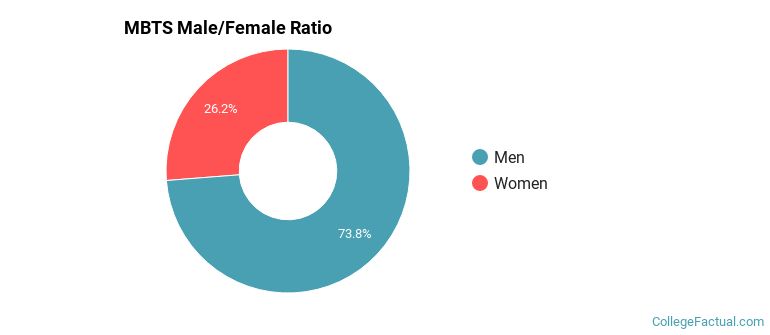
For the gender breakdown for all students, go here.
MBTS Racial/Ethnic Breakdown of Undergraduates
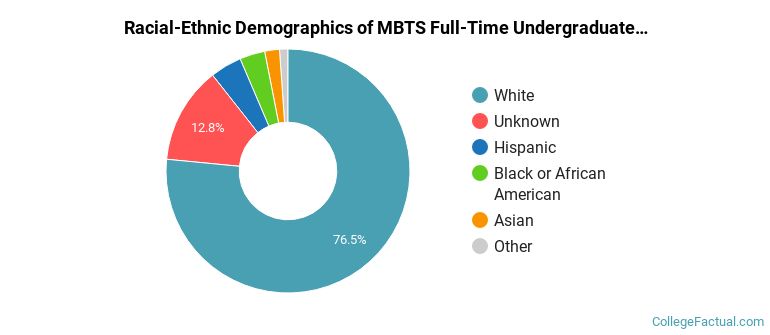
| Race/Ethnicity | Number |
|---|---|
| White | 292 |
| Hispanic | 48 |
| Unknown | 29 |
| Black or African American | 14 |
| Asian | 7 |
| Multi-Ethnic | 4 |
| Native Hawaiian or Pacific Islander | 0 |
| International | 0 |
See racial/ethnic breakdown for all students.
Male/Female Breakdown of Graduate Students
About 10% of full-time grad students are women, and 90% men.
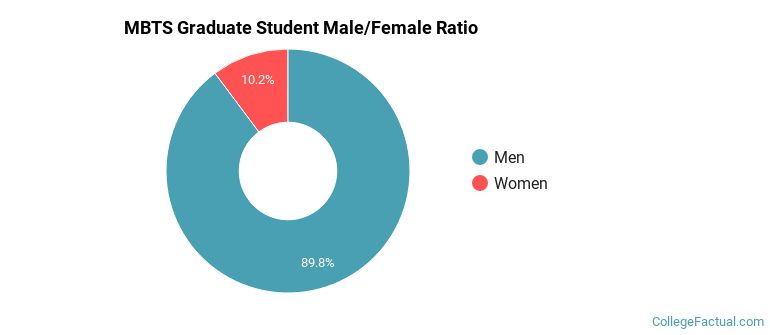
For the gender breakdown for all students, go here.
MBTS Racial-Ethnic Breakdown of Graduate Students
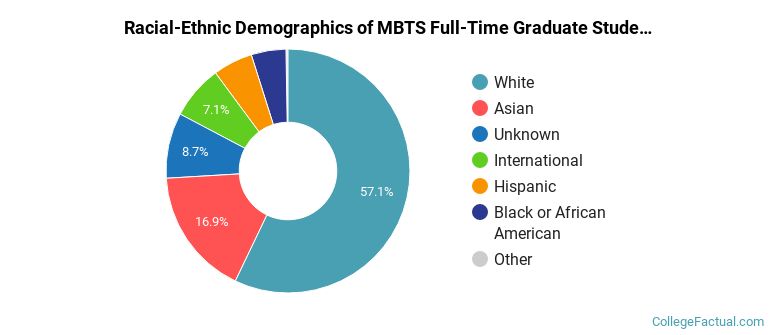
| Race/Ethnicity | Number |
|---|---|
| White | 800 |
| Asian | 266 |
| International | 132 |
| Unknown | 117 |
| Hispanic | 68 |
| Black or African American | 60 |
| Multi-Ethnic | 5 |
| Native Hawaiian or Pacific Islander | 0 |
See racial/ethnic breakdown for all students.
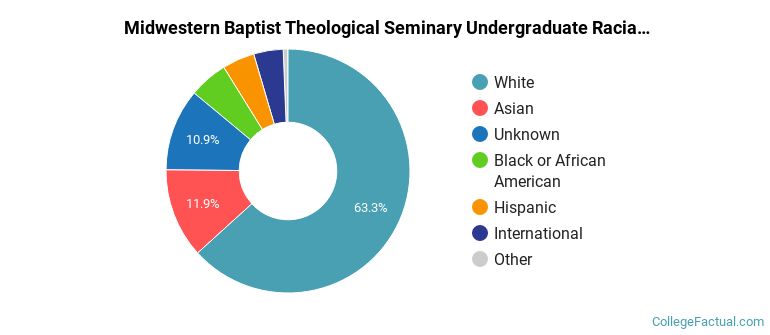
| Race/Ethnicity | Number |
|---|---|
| White | 2,089 |
| Asian | 430 |
| Unknown | 312 |
| International | 214 |
| Hispanic | 199 |
| Black or African American | 147 |
| Multi-Ethnic | 16 |
| Native Hawaiian or Pacific Islander | 0 |
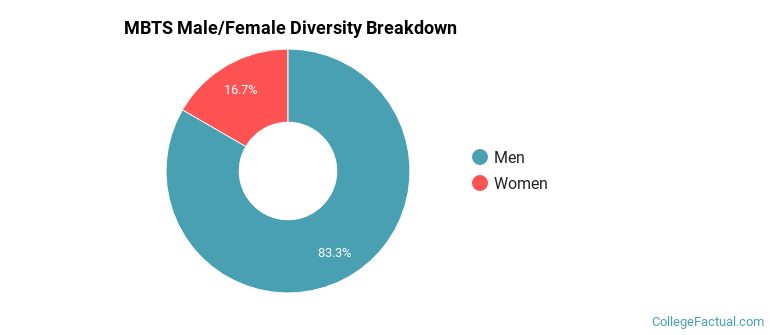
There are approximately 631 female students and 2,801 male students at MBTS.
MBTS ranks 411 out of 2,183 when it comes to geographic diversity.
72.92% of MBTS students come from out of state, and 0% come from out of the country.
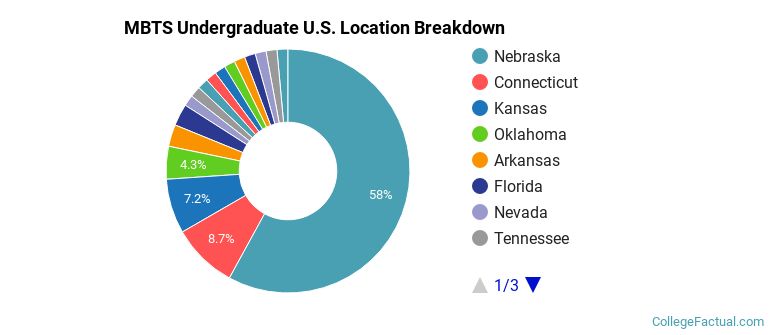
The undergraduate student body is split among 17 states (may include Washington D.C.). Click on the map for more detail.
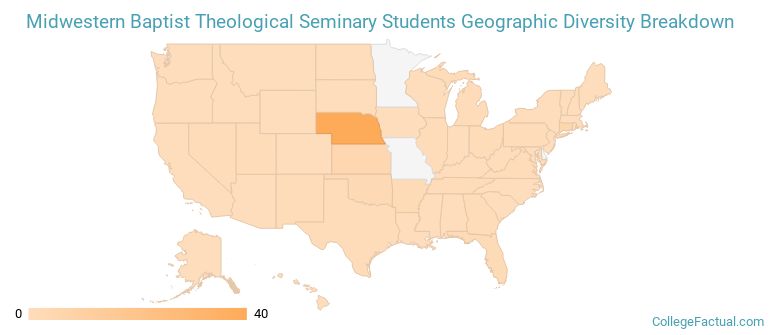
| State | Amount |
|---|---|
| Nebraska | 40 |
| Connecticut | 6 |
| Kansas | 5 |
| Oklahoma | 3 |
| Arkansas | 2 |
A traditional college student is defined as being between the ages of 18-21. At MBTS, 5.76% of students fall into that category, compared to the national average of 60%.
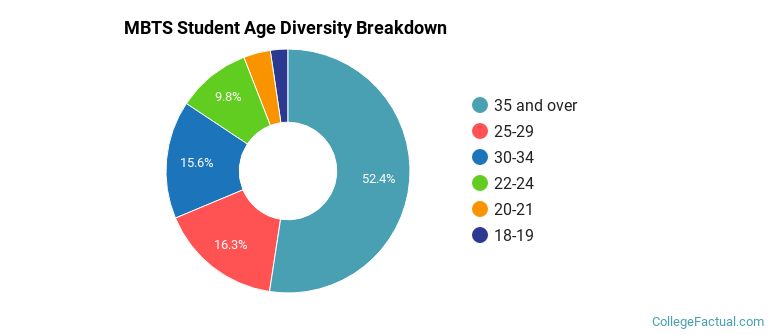
| Student Age Group | Amount |
|---|---|
| 35 and over | 1,147 |
| 25-29 | 356 |
| 30-34 | 342 |
| 22-24 | 214 |
| 20-21 | 78 |
| 18-19 | 51 |
| Under 18 | 0 |
Footnotes
*The racial-ethnic minorities count is calculated by taking the total number of students and subtracting white students, international students, and students whose race/ethnicity was unknown. This number is then divided by the total number of students at the school to obtain the racial-ethnic minorities percentage.
References
Department of Homeland Security Citizenship and Immigration Services
Read College Factual's Diversity Ranking Methodology.